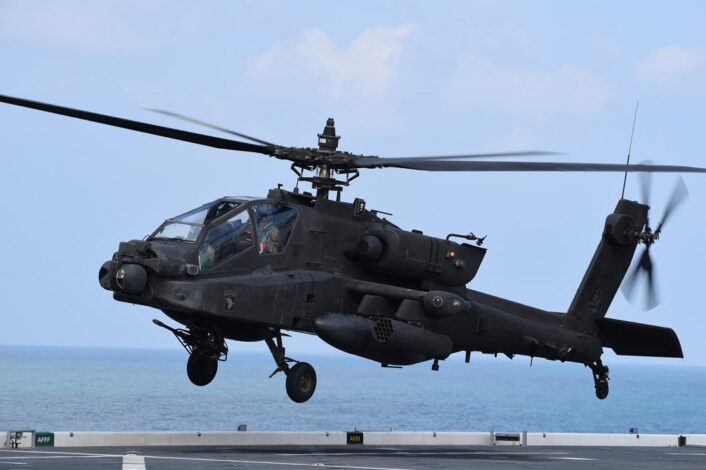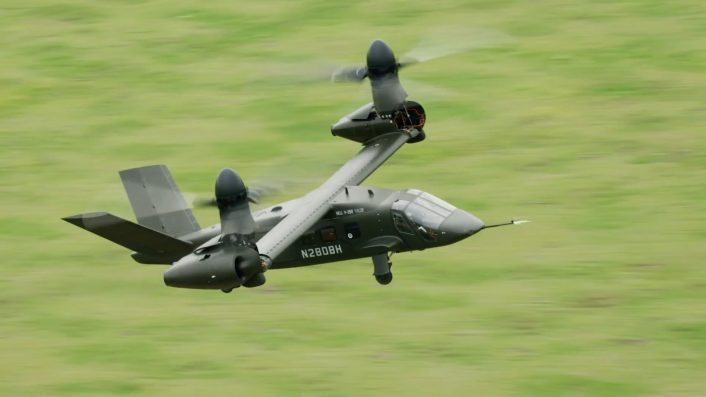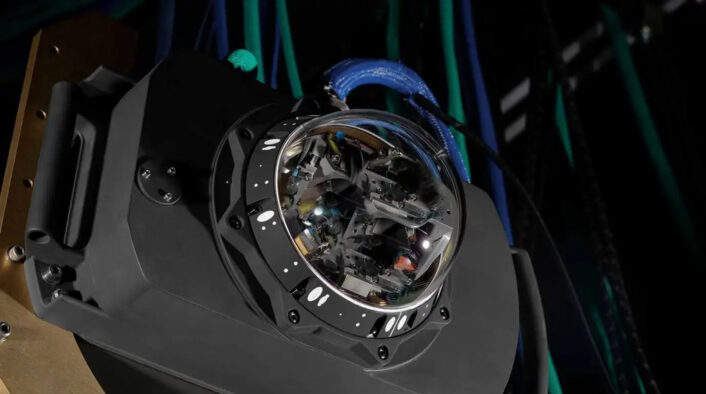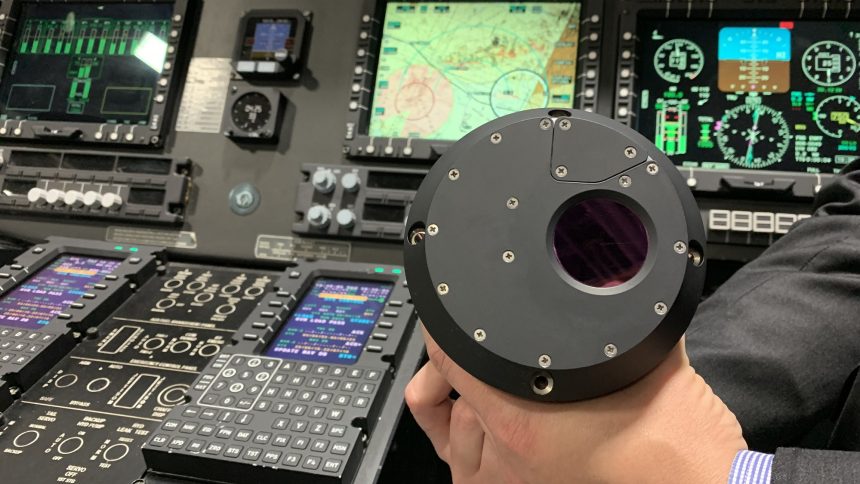ITDS Phase II brings ATHENA sensor to Army aircraft, providing 360° situational awareness and enhanced survivability against evolving threats.
Northrop Grumman has been selected by the U.S. Army to continue into Phase II of the Improved Threat Detection System (ITDS) Other Transaction Agreement (OTA), a key initiative to modernize aircraft survivability for Army Aviation. The program aims to deliver advanced missile warning and threat detection capabilities across platforms including the AH-64 Apache and MV-75 Future Long-Range Assault Aircraft (FLRAA).
Central to this effort is Northrop Grumman’s Advanced Tactical Hostile Engagement Awareness (ATHENA) sensor, a next-generation system designed to provide real-time situational awareness and counter evolving threats. The new system would Common Missile Warning System (CMWS) currently used by the Army.
We’re committed to shaping the future of defense. Our Improved Threat Detection System (ITDS) has been selected by the @USArmy as its future threat warning system to protect aircraft in a wide range of military operations. 🚁✨
Check out the Army’s announcement:… pic.twitter.com/1P0xj3Ise1
— Northrop Grumman (@NGCNews) August 18, 2025
Improved Threat Detection System
The Improved Threat Detection System (ITDS) is the next generation Missile Warning and Threat Detection System that will equip current and future U.S. Army Aviation platforms. The system will provide a higher resolution two color infrared sensor suite with a threat agnostic approach to aircraft survivability, says the service.
ITDS will provide the capability to detect, classify, cue, and declare on existing and emerging Electro-Optical/Infra-red (EO/IR) threats. The system will also provide appropriate Hostile Fire Indications (HFI), differentiating between small arms and rocket threats.
ITDS will be interdependent with other systems, being able of cueing laser-based countermeasures (DIRCM) and/or deploying expendable countermeasures (chaff and flares) via Improved Countermeasure Dispensers (ICMD). The system will choose the appropriate countermeasure system based on the threat classification.
“This critical capability is required for Army Aviation to maintain overmatch against near peer threats and enables advanced tactics through increased detection range, improved detection in clutter, and threat agnostic algorithms to rapidly respond to emerging threats and allow the execution of full spectrum multi-domain operations,” said Col. Brock Zimmerman, PM ASE.

ITDS Phase I Achievements and Phase II Objectives
ITDS Phase I focused on technology demonstration and maturation to evaluate vendor solutions and technical maturity, concluding in May 2025 with over 51 hours of flight testing. The service selected last year Northrop Grumman and Lockheed Martin to provide solutions for Phase I.
Army evaluators replicated tactics used in current combat operations, assessing the sensors’ ability to detect, classify, and cue a wide range of threats, from small arms fire to anti-tank guided missiles and MANPADS. The tests evaluated the sensors’ effectiveness in operationally realistic scenarios.
Phase II emphasizes delivery of ITDS prototypes, including design refinement, demonstration testing, architecture evaluation, prototype application hosting, missile warning sensor characterization, and operational integration. The performance will be again carefully evaluated during flight testing ahead of Phase III.
Future Outlook
The ITDS program is set to transition to the Middle Tier of Acquisition Rapid Prototyping pathway in the first quarter of Fiscal Year 2026. The Abbreviated Capability Development Document (A-CDD) approved in July 2025 calls for ten prototypes for testing and integration, and 100 fieldable systems.
Rapid prototyping allows the Army to accelerate delivery of advanced survivability technologies while retaining flexibility for iterative improvements based on operational feedback. This is critical to allow the service to counter emerging threats in multi-domain operations.

ATHENA
The Advanced Tactical Hostile Engagement Awareness (ATHENA) is a staring, always-on sensor providing continuous 360-degree coverage. It delivers high-resolution, wide-band threat detection and can rapidly geolocate incoming Electro-Optical/Infrared (EO/IR) threats, including hostile fire, rockets, anti-tank guided missiles, small arms, and larger-caliber weapons.
Dennis Neel, Northrop Grumman’s Survivability Development Programs Director, said “ATHENA can see where pilots can’t, even looking through an aircraft floor,” offering situational awareness previously limited to larger platforms. ATHENA provides the ability, similarly to the F-35’s Distributed Aperture System, to view any point in 360 degrees around the aircraft and even “look through” the aircraft floor.
In fact, multiple sensor feeds are seamlessly stitched to create a full spherical view, allowing crews to monitor threats from any direction. The increased detection range, resolution, and processing power give pilots and countermeasure systems more time to respond to threats, improving survivability and mission success.
Integration with Existing Systems
ATHENA is designed to integrate with existing countermeasure systems, including Northrop Grumman’s Common Infrared Countermeasure (CIRCM) suite, enabling automated or semi-automated responses. The company has previously defined ATHENA as the “eyes of CIRCM.”

Quick, precise threat location and trajectory data improve reaction times and effectiveness of existing protections. ATHENA’s modular, scalable architecture supports legacy and future aircraft, networked battlefield data links, and integration with other survivability technologies.
In fact, as required by the Army, the system has to be Modular Open Systems Approach (MOSA)-compliant and able to operate on a digital backbone, allowing quick integration and upgrades. This adaptability is crucial as Army Aviation operates in increasingly complex and contested environments.
Strategic Context
Legacy missile warning systems, such as the Common Missile Warning System (CMWS) and Limited Interim Missile Warning System (LIMWS), provided critical protection but were limited in coverage, detection speed, and adaptability. ATHENA addresses these gaps with broader coverage, threat-agnostic algorithms, and higher processing capability, helping Army Aviation maintain overmatch against near-peer threats and adapt to emerging challenges in multi-domain operations.
Army aircraft face increasingly sophisticated air defense networks, unmanned aerial systems, and advanced guided munitions. ATHENA can provide continuous, real-time threat monitoring, allowing aviators to concentrate on the mission while maintaining the situational awareness needed to operate effectively.









